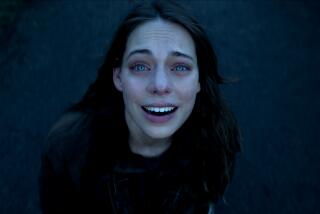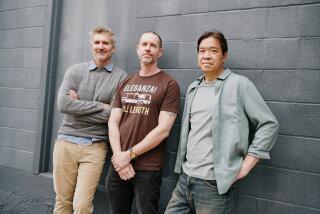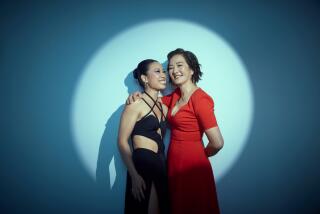Human Body Stars in Its Own Flashy Learning Channel Series
- Share via
The Learning Channel’s new documentary on the human body, “The Ultimate Universe,” begins with a stunning visual trope.
The camera pans across a human chain of being, composed of dozens of naked people standing shoulder to shoulder, each person a year older than the one before, from birth to dotage: Squirming, squalling, shy, bold, firm, fat, pubescent, pregnant, pendulous, bald, muscular, flabby, round, short, tall and senescent. The very oldest are wrapped modestly in robes as if draped in the dignity of time.
This recurring image is the signature on a brazen declaration of purpose: Here is a television series that with considerable flair and unflinching clinical expertise is determined to deconstruct the human body and its intimate biology.
In large measure, this eight-part BBC co-production, which begins its North American premiere Sunday at 9 p.m, succeeds brilliantly.
This is the story of the biological chassis we all ride on a journey from birth to death and of complex organisms--ourselves--that change as much as a caterpillar changes in its lifetime. The series imaginatively combines the newest in flashy computer-generated medical imagery with documentary footage to range through the body in a way that simultaneously startles and enlightens.
Indeed, when was the last time you were inside a penis at the moment of ejaculation or floating through the feathers of the Fallopian tubes to catch the strange berry of a human egg at the moment of ovulation? Have you ever thought to trace the ancestry of your ear bones to the support structures of fish gills or to measure in buckets the 1,850,000 salt tears you are likely to shed in a lifetime?
The six-part series, which was recently awarded a Peabody, owes much of its success to the gravel-voiced authority of its host, Lord Robert Winston, a noted infertility expert at the Royal Postgraduate Medical School in London and chairman of the House of Lords Select Committee on Science and Technology.
His question-mark eyebrows and brush mustache make for a distinctive presence. In pursuit of his subject, he displays an edgy sense of whimsy, a gift for the poetry of medicine and a game willingness to put his own body in the service of documentary filmmaking.
At different junctures, we have Winston in a crash helmet dirt-racing in a rally car to demonstrate the challenges facing the brain, lofting a miner’s lantern in a cavern to illustrate infinitesimal changes across time, green with seasickness in a raft to discuss morning sickness, feeding his own blood to a leech to demonstrate the relationship between a fetus and its mother and gazing through a microscope at a slide slick with his own sperm.
If the series has a failing, it is Winston’s occasional lapse into the didactic, as if he cannot trust his viewers to get it right the first time. But this is, after all, the Learning Channel, where a little too much teaching can only be a good thing.
* “Intimate Universe: The Human Body” premieres Sunday at 9 p.m. on the Learning Channel; the second episode will be broadcast Monday at 9 p.m., with repeats April 25 from 2 to 6 p.m. The final four installments begin Aug. 1. The network has rated it TV-G (suitable for all ages).
More to Read
The complete guide to home viewing
Get Screen Gab for everything about the TV shows and streaming movies everyone’s talking about.
You may occasionally receive promotional content from the Los Angeles Times.






